Alan Jones: China is pushing further into the South China Sea
While Australia and the world is pre-occupied with COVID-19, China is continuing its long march across through the South China Sea - we must not ignore the threat, writes Alan Jones.
Opinion
Don't miss out on the headlines from Opinion. Followed categories will be added to My News.
Given the universal preoccupation with coronavirus and the associated fact that parliaments are rarely meeting and the democratic process of informed debate seems to have been sidelined, it would be interesting to determine what emphasis the Australian voter gives to the recent visit to Washington by Foreign Minister Marise Payne and Defence Minister Linda Reynolds.
It was thought that the discussions would involve what is called “freedom of navigation” in the South China Sea, that would have Australian ships sail within 12 nautical miles of islands in the sea to which China claims disputed access.
I am aware that this subject is not likely to command a lot of attention or discussion in the local pub.
And, indeed, in the press release after the meeting, the South China Sea wasn’t mentioned. For many lefties out there, they’d have you believe that the greatest threat to our liberty is Rupert Murdoch, not President Xi.
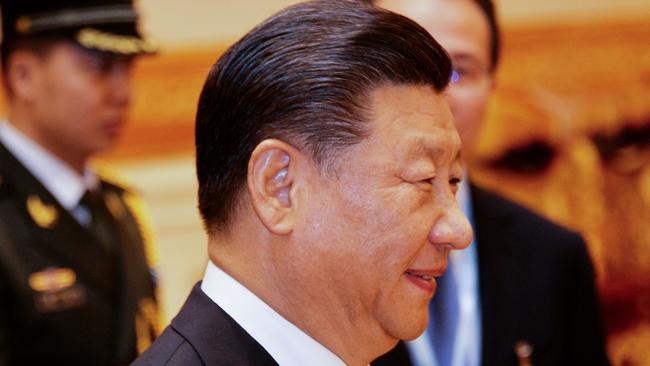
MORE ALAN JONES
Premiers ringing a false alarm on COVID-19
COVID panic is worse than the disease
No Garden of Eden for Liberals as Nationals drag them down
Where does the South China Sea fit into this?
Simply, if we can’t guarantee freedom of navigation in the South China Sea, the majority of our trade travel is under threat.
It is all well and good saying that recently we delivered a statement to the UN that Chinese actions in the South China Sea contravened international law. China’s behaviour on many fronts contravenes endless international edicts.
Note that prior to being sworn in as Donald Trump’s Secretary of State, in January 2017, Rex Tillerson got into trouble for saying that China should be barred from artificial islands it had built in the South China Sea, in waters claimed by neighbouring countries.
He said China’s behaviour was, “akin to Russia’s taking of Crimea.”
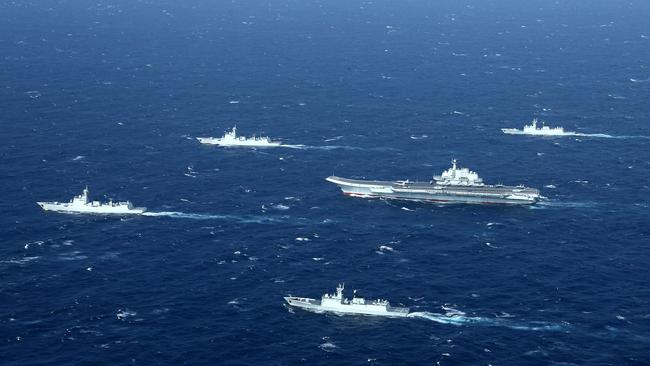
What Tillerson was alluding to is the problem that remains with us today – China claiming sovereignty over almost the entire South China Sea, building several artificial islands on reefs and rocks and outfitting them with military-length airstrips and anti-aircraft guns.
Tillerson, who is no dunce and prior to becoming the 69th United States Secretary of State was Chairman and CEO of ExxonMobil for 11 years, said at the time, “we are going to have to send China a clear signal, that first, the island building stops, and second, your access to those islands is not going to be allowed … They are taking territory or control or declaring control of territories that are not rightfully China’s”.
That was three and a half years ago. The problem remains.
To be fair, it would be sheer folly for Australia to insist from China the freedom of navigation if we were the only nation to do it. We would be setting ourselves up to be hammered by China. Put another way, we can’t be doing this on our own and then find ourselves abandoned by allies.
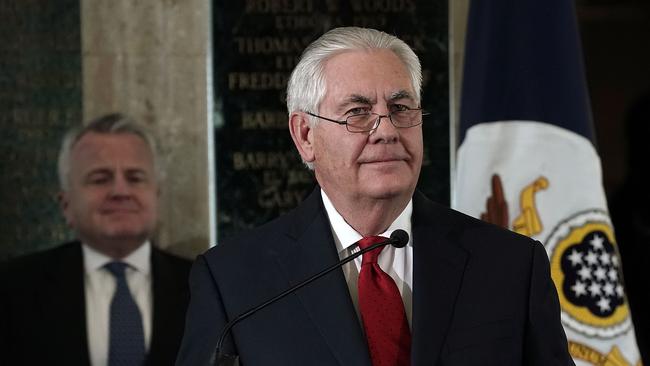
The 1982 United Nations Conventions on the Law of the Sea virtually guarantees freedom of navigation within 12 nautical miles of Chinese territorial claims; but in the last few years, China has been asserting ever greater control over far away waters that were previously considered international or claimed by other countries.
Under international law, if it were adhered to, China could be compelled to abandon many of its South China Sea claims. But, of course, as with the recent decision in The Hague which said emphatically that China had broken international law by endangering Philippine ships and damaging the marine environment, there is no enforcement mechanism for such decisions to be honoured.
In fact, China boycotted those proceedings, saying the tribunal had no jurisdiction and it would ignore any decision.
China has been building islands and installing runways many miles beyond what it is lawfully allowed under the United Nations treaty on Maritime Territorial Issues which China has signed, which was Tillerson’s point more than three years ago.
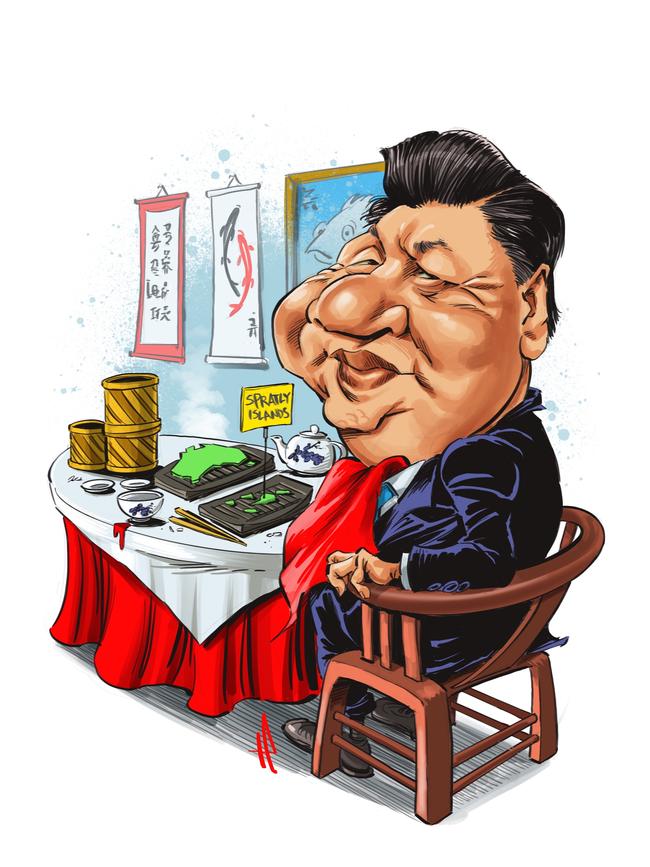
Why should Australia be concerned?
Well, China, under President Xi Jinping, is seeking expansion through mechanisms other than conquest.
For example, why do you think they own our dairy farms, our beef farms, our coal, iron ore, and hold a 99-year lease on the Port of Darwin?
Why do they have Confucius Institutes within our universities?
Why does the Chinese government seek to ingratiate itself via soft loans and political donations to the fragile states of the Pacific, which we always regarded as our sphere of influence?
Why does Daniel Andrews sign up to the Belt and Road?
Could the endless instances of academic collaboration with Chinese institutions become another form of intellectual theft?
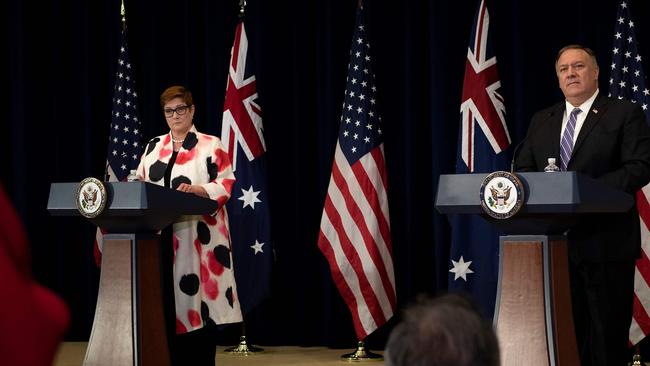
So now, unsurprisingly, the South China Sea.
The US Energy Information Agency estimates there are 11 billion barrels of oil and 190 trillion cubic feet of natural gas in deposits under the sea, more than exists in the reserves of some of the world’s biggest energy exporters.
The waters, according to informed judges, also contain lucrative fisheries that account for, according to some estimates, 10 per cent of the global total. And this means that a lot of fishing boats are cruising around in waters contested by several different navies, increasing the risk of conflict.
The area’s greatest value is as a trade route.
It is estimated $6 trillion worth of goods move through the sea every year, 30 per cent of global maritime trade. That includes huge amounts of oil and $1.2 trillion of annual trade with the US and 60 per cent of our own seaborne trade passes through the sea.
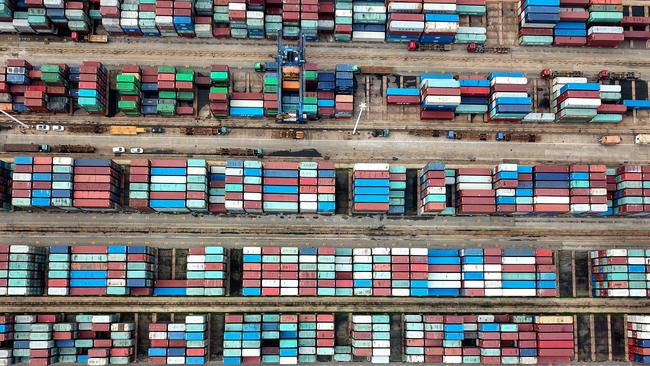
In fact, all countries want open sea routes. Everyone benefits from the free flow of goods between Asia and the rest of the world.
That is why the US and, indeed, Australia, stress freedom of movement in international waters. We don’t want to be held, yet again, as an economic hostage to China.
Of course, President Xi, suspects that the global status quo is engineered to serve Western interests first; so China is seeking greater control over the waterways. If it gains such control and wants to further its interests and reach in its own backyard, it axiomatically can exert greater power over the region. And that includes us.
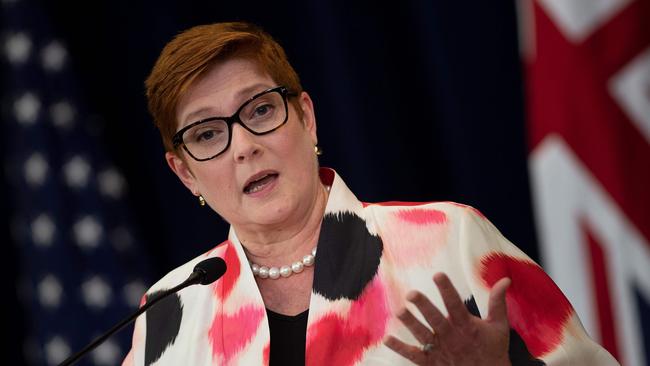
I am not suggesting that Marise Payne and Linda Reynolds needed to fly to America and go into quarantine to discuss all this.
But if the allies stick together, and this includes the US, the biggest naval power in the world, then China will get the message.
That makes the South China Sea a test case for whether China is the kind of power that works within the system or against it.
We can’t afford to take our eye off this rather dangerous ball.

